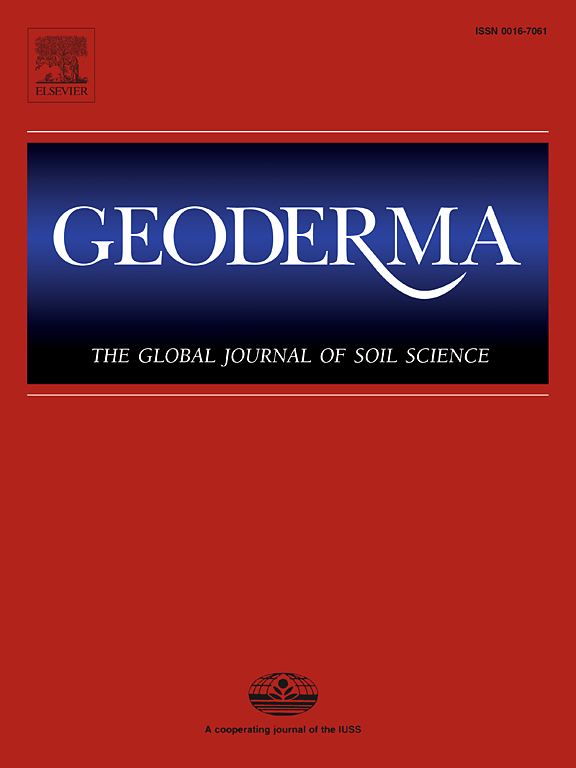Experimental and numerical investigations on spilled oil migration and contamination characteristics in freezing soils
IF 5.6
1区 农林科学
Q1 SOIL SCIENCE
引用次数: 0
Abstract
Pipeline oil spills can lead to environmental pollution and alter the thermal state of soils in cold regions. This study investigatesd the characteristics of oil migration in freezing soils. A series of laboratory tests were conducted on soils with different temperature boundaries and initial water contents. Using porous media theory, a mathematical model was developed to describe the oil migration process, accounting for the ice-water phase change within soil pores and the influence of soil temperature. The model was validated by comparing simulation results with experimental data. The study revealed that, 1) the temperature of spilled oil significantly disrupts the soil’s thermal state, and the oil migration can be affected by several factors, e.g. the temperature gradient, gravity and concentration gradients within the soil. 2) soil temperature affects oil viscosity and the adsorption of soil particles, influencing the migration rate and diffusion range. The low permeability of frozen soil inhibits oil seepage. When the temperature boundary increases from −5 °C to −1 °C, the total oil infiltrating the soil increases by 142 %.3) Pore water content impedes oil migration due to the incompatibility between oil and water. A 32.5 % increase in spilled oil is observed when the initial water content reduces from 20% to 12%. This study provides a scientific basis for soil restoration following oil pipeline leak in cold regions.

冻土中溢油运移及污染特性的实验与数值研究
管道溢油会导致环境污染,并改变寒冷地区土壤的热状态。本研究调查了石油在冰冻土壤中迁移的特征。对不同温度边界和初始含水量的土壤进行了一系列实验室测试。利用多孔介质理论,建立了一个数学模型来描述油类迁移过程,其中考虑了土壤孔隙中的冰水相变以及土壤温度的影响。通过比较模拟结果和实验数据,对模型进行了验证。研究结果表明:1)溢出油的温度极大地破坏了土壤的热状态,油类迁移会受到多种因素的影响,如土壤内的温度梯度、重力梯度和浓度梯度。2)土壤温度会影响油的粘度和土壤颗粒的吸附性,影响迁移速度和扩散范围。冻土的低渗透性会抑制油类渗出。当温度边界从 -5 °C 上升到 -1 °C 时,渗入土壤的石油总量增加了 142%。3)由于油和水不相容,孔隙水含量阻碍石油迁移。当初始含水量从 20% 降至 12% 时,溢出的石油增加了 32.5%。这项研究为寒冷地区石油管道泄漏后的土壤修复提供了科学依据。
本文章由计算机程序翻译,如有差异,请以英文原文为准。
求助全文
约1分钟内获得全文
求助全文
来源期刊

Geoderma
农林科学-土壤科学
CiteScore
11.80
自引率
6.60%
发文量
597
审稿时长
58 days
期刊介绍:
Geoderma - the global journal of soil science - welcomes authors, readers and soil research from all parts of the world, encourages worldwide soil studies, and embraces all aspects of soil science and its associated pedagogy. The journal particularly welcomes interdisciplinary work focusing on dynamic soil processes and functions across space and time.
 求助内容:
求助内容: 应助结果提醒方式:
应助结果提醒方式:


